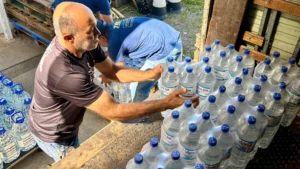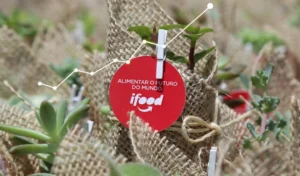The effects of climate change are not the same for everyone. Extreme events, such as storms that cause flooding, more seriously affect those who live in the outskirts of cities. And it is the poorest people who least have the resources to withstand high temperatures, since the use of fans and air conditioning is too costly for families.
In Rio de Janeiro, favela residents are creating their own affordable and sustainable solutions to address these problems. The newspaper Folha de S.Paulo shows three examples of projects that attempt to mitigate the impact of climate change with initiatives ranging from a green roof to a sewage treatment system that uses biotechnology to ward off mosquitoes and diseases.
Green Roof in the Parque Arará community
Luis Cassiano Silva is an environmental activist and created the project nine years ago Favela Green Roof in the community where he lives, Parque Arará, in the north of Rio de Janeiro. The idea came after another very hot summer.
The green roof, which in the case of Silva's residence extends to other places, added another color to the landscape of the region — now the green divides a space previously dominated by the red of the bricks and the gray of the asbestos tiles — and a refreshment to alleviate heat islands, especially in the hottest months of the year.
According to him, the house that only cooled down in the early hours of the morning, now, with its green roof, registers temperatures of up to 15ºC less than when only asbestos made up the roof. “My mission is here. I want to look and see everything green here,” he told Folha.
reforestation cooperative
Carlos Antonio Pereira is one of the founders of Coopbabilônia, a reforestation cooperative located in Morro da Babilônia, in the south of Rio. For two decades, he has participated in actions to recover an area of 180 m² of Atlantic Forest.
First, it relied on the city hall for this mission. In 2000, when he helped create the cooperative, he also had the support of a shopping mall to, in addition to reforestation, promote ecotourism in the region.
According to him, 400,000 seedlings have already been planted, which has changed the landscape and the frequency of visits by native birds, such as parrots and jacupembas. “When we are there in the field, planting seedlings, we also contribute to combating climate change,” Pereira told the newspaper.
Sewage treated with biotechnology
The community of Vale Encantado, located in Alto da Boa Vista, also in the north of Rio, suffered from a problem (sadly) very common in favelas and outskirts of Brazil: open sewage.
Therefore, the population of around 100 residents lived with mosquitoes, river contamination and cases of diarrhea, which were only alleviated when a ecological biosystem to treat sewage began to work. The system was put in place by seven local residents and was “mentored” by engineers Leonardo Adler and Tito Cals, from PUC-Rio.
In this biosystem, sewage is treated in two stages. In the first, it is taken through pipes to a dome, where bacteria degrade the organic matter, generating biogas (which can be used as an energy source), a liquid compound and another solid, which remains in this dome.
Secondly, the liquid residue from the first stage is transferred to a tank so that the plants can filter the nutrients that can still be used to clean the water. This water goes to the Tijuca Forest (which is nearby) without contaminants or chemicals. The expectation is that, per year, the work created in the favela will treat 5 to 7.5 million liters of sewage.
“A project of this size needs to come from the community, and not come from the outside in,” said Otávio Barros, president of the Vale Encantado residents’ association and foreman for the construction of the biosystem. With cleaner streams, fewer mosquitoes and no bad smells, Barros celebrates: “nature thanks you. Furthermore, when we meet a resident, we see how happy they are to have their sewage treated.”


